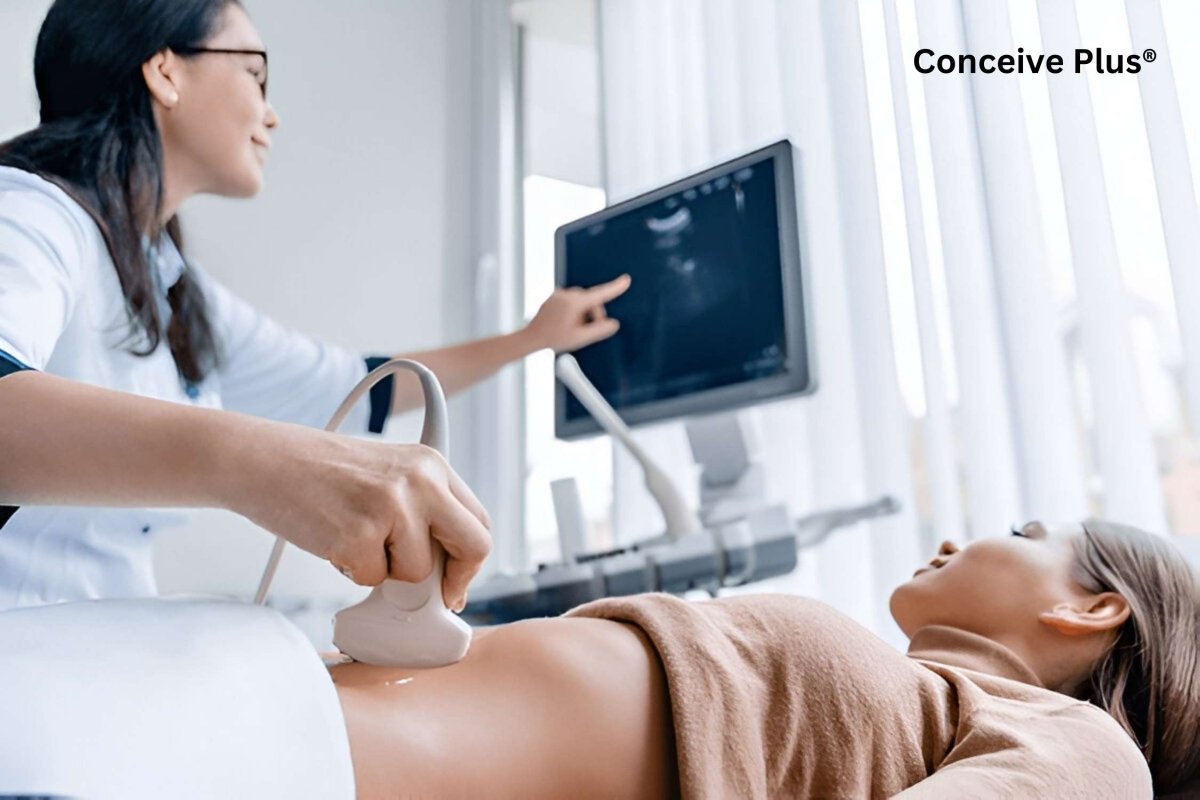Exploring The Pathway of Sperm in Female from Release to Storage and Travel

The pathway of sperm in female is really something. It’s quite a journey that sperm have to go through to reach the egg, and honestly, understanding it can make a huge difference if you’re trying to conceive. From how sperm is released in female during ejaculation to how it travels and where it’s stored, every part of this process is vital to getting pregnant. Let’s walk through it step by step.
How Sperm is Released in Female
So, how sperm is released in female? When a man ejaculates, sperm are released into the vagina. But it’s not just sperm—there’s a whole protective fluid that comes along to help them survive. Why? Because the vaginal environment is acidic, and without this protection, the sperm wouldn’t stand a chance [1]. This is the first step in the sperm’s journey and it’s crucial for them to survive long enough to even think about getting near an egg.
Top Tip: Eating foods rich in Vitamin C can help keep sperm healthy. Sperm need all the help they can get to survive this journey!
Where is Sperm Stored in the Female Body
Once sperm enter the cervix, it’s like entering the next phase of the challenge. They’re met with cervical mucus, and it’s thick—only the strongest swimmers can get through [2]. So, where is sperm stored in the female body at this point? Sperm that make it through the cervix can be stored there or even in the uterus. And they wait. They wait until the egg is released. They don’t just keep swimming around, wasting energy. This storage gives them time to survive and fertilize the egg when ovulation happens [3].
Some sperm even make it to the uterine glands, which act like little storage lockers until they’re needed. It’s kind of amazing, really [4].
Top Tip: Zinc can actually help sperm live longer. Making sure you have enough of it can really support the chances of those little guys surviving the journey [5].
How Do Sperm Travel
Once stored, how do sperm travel the rest of the way? Well, sperm traveling up through the female reproductive system isn’t just about swimming. It’s actually a combination of their movement and the natural contractions of the uterus and fallopian tubes that help them along [6]. Those contractions push them up towards the fallopian tubes where they might meet the egg. But here’s the thing: out of the millions of sperm that were released, only a tiny percentage make it this far [7]. Even with a lower sperm count, like 2 million sperm count pregnancy, conception is still possible with the right approach.
Top Tip: Taking CoQ10 supplements might boost sperm energy levels, helping them survive this difficult journey [8]. Fertility-friendly products containing key nutrients like Zinc and L-Arginine can help support sperm motility and improve your chances of conception.
How Does Sperm Move, How Do Sperm Move, and How Does a Sperm Move
Sperm movement is all about the flagellum—the tail that propels them forward. So, how does sperm move? And how do sperm move? It’s all in that little tail, helping them swim through the mucus, into the uterus, and up to the fallopian tubes [9]. But it’s not easy. The whole journey depends on sperm staying motile the entire time. If they slow down or stop, they’re done. And how does a sperm move through all these barriers? It’s a constant battle of pushing forward, and only the healthiest ones can do it [10].
Top Tip: L-Carnitine can improve sperm motility, which means they’re more likely to reach the egg if they’re moving faster and more efficiently [11].
Journey of Sperm Cell
The journey of sperm cell is long and full of obstacles. First, they have to make it through the acidic vagina. Then, they navigate the thick cervical mucus and travel up into the uterus [12]. From there, they must find their way to the fallopian tubes where the egg might be. The journey of sperm isn’t quick either. Sperm can survive for up to five days inside the female body, waiting for the egg to be released. This means the timing has to be just right to increase the chances of fertilization to happen.
Top Tip: Folate and Vitamin D are great for reproductive health, boosting both sperm and egg quality, which is essential for a successful conception.
The Bottom Line
The pathway of sperm in female is an incredible process that requires everything to line up just right. From how sperm is released in female to where is sperm stored in the female body, and how do sperm travel, each stage plays a vital role in whether or not fertilization happens. Only the healthiest sperm, those that know how does sperm move, how do sperm move, and how does a sperm move, will complete the journey of sperm cell and have a shot at fertilizing the egg.
By supporting sperm health with proper nutrients like Zinc, L-Carnitine, and CoQ10, you can give them the best chance of surviving the journey and improving your chances of conceiving.
Top Tip: A diet full of fertility-supporting nutrients can make all the difference when you're trying to conceive.
FAQs
How long can sperm survive in the female body?
Sperm can live up to five days in the female reproductive system, giving them plenty of time to wait for ovulation.
How do sperm travel to the egg?
Sperm travel through the cervix and uterus to the fallopian tubes, helped along by both their own swimming and the contractions of the female reproductive organs.
Where is sperm stored in the female body?
Sperm can be stored temporarily in the cervix or uterus, waiting for the right moment when ovulation occurs.
How does sperm move through the reproductive system?
Sperm move using their tail, called a flagellum, which helps them swim, and they’re also assisted by the natural contractions in the uterus and fallopian tubes.
What nutrients help improve sperm motility?
Nutrients like CoQ10, Zinc, and L-Carnitine are known to boost sperm motility and overall health, increasing the chances of successful conception.
Citations
- Zini A, Sigman M. Are tests of sperm DNA damage clinically useful? Pros and cons. J Androl. Available at: https://pubmed.ncbi.nlm.nih.gov/19059901/
- De Wert G, Dondorp W, Shenfield F, Barri P, Devroey P, Diedrich K, Tarlatzis B, Provoost V, Pennings G. ESHRE Task Force on Ethics and Law 23: medically assisted reproduction in singles, lesbian and gay couples, and transsexual people†. Hum Reprod. Available at: https://pubmed.ncbi.nlm.nih.gov/25052011/
- Najmabadi S, Schliep KC, Simonsen SE, Porucznik CA, Egger MJ, Stanford JB. Cervical mucus patterns and the fertile window in women without known subfertility: a pooled analysis of three cohorts. Hum Reprod. Available at: https://www.ncbi.nlm.nih.gov/pmc/articles/PMC8487651/
- Suarez SS, Pacey AA. Sperm transport in the female reproductive tract. Hum Reprod Update. Available at: https://pubmed.ncbi.nlm.nih.gov/16272225/
- Fallah A, Mohammad-Hasani A, Colagar AH. Zinc is an Essential Element for Male Fertility: A Review of Zn Roles in Men's Health, Germination, Sperm Quality, and Fertilization. J Reprod Infertil. Available at: https://pubmed.ncbi.nlm.nih.gov/30009140/
- Kölle S. Sperm-oviduct interactions: Key factors for sperm survival and maintenance of sperm fertilizing capacity. Andrology. Available at: https://www.ncbi.nlm.nih.gov/pmc/articles/PMC9321146/
- Cheng CY, Mruk DD. A local autocrine axis in the testes that regulates spermatogenesis. Nat Rev Endocrinol. Available at: https://pubmed.ncbi.nlm.nih.gov/20571538/
- Balercia G, Mosca F, Mantero F, Boscaro M, Mancini A, Ricciardo-Lamonica G, Littarru G. Coenzyme Q(10) supplementation in infertile men with idiopathic asthenozoospermia: an open, uncontrolled pilot study. Fertil Steril. Available at: https://pubmed.ncbi.nlm.nih.gov/14711549/
- Yanagimachi R. Mysteries and unsolved problems of mammalian fertilization and related topics. Biol Reprod. Available at: https://www.ncbi.nlm.nih.gov/pmc/articles/PMC9040664/
- Turathum B, Gao EM, Chian RC. The Function of Cumulus Cells in Oocyte Growth and Maturation and in Subsequent Ovulation and Fertilization. Cells. Available at: https://www.ncbi.nlm.nih.gov/pmc/articles/PMC8470117/
- Lombardo F, Sansone A, Romanelli F, Paoli D, Gandini L, Lenzi A. The role of antioxidant therapy in the treatment of male infertility: an overview. Asian J Androl. Available at: https://www.ncbi.nlm.nih.gov/pmc/articles/PMC3739574/
- Barratt CL, Cooke ID. Sperm transport in the human female reproductive tract--a dynamic interaction. Int J Androl. Available at: https://pubmed.ncbi.nlm.nih.gov/1761321/
Buy sperm volume boosters the best supplements to increase sperm volume are made by Conceive Plus for men. Order premium sperm volume enhancement supplements and shop top-rated sperm volume increase pills today.













